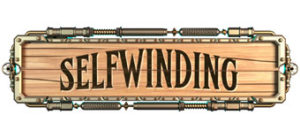With my goal to be an every day writer, I can’t really take a sick day. But I also can’t expect a normal writing day while I have a sore throat, runny nose, and major exhaustion. When I’m sick, here’s how I make the adjustments to take care of myself and still be productive:
Put aside non-writing activities.
To make sure I have the energy to write, I take a sick day from all non-writing activities. That means I step away from the blog, editing, responding to emails, and anything else that is part of my “work” stack. Doing this lets me focus my time on self-care and on writing, which will not only help keep my writing streak, but hopefully let me get better faster.
Rest up, then write.
The moment I’m out of bed and feeling up to sitting at the computer, I go for it! That might be my only writing session for the day, but if I’m prepared for it, 10 minutes will be all that I need.
Lower the bar.
Normally my daily writing includes working on my current projects, but on a sick day I’ll let myself chase a stray thought or write something I might not complete.
My daily goal includes writing 400 words per day, but this is where my minimum goal of 150 words per day kicks in. When I’m not feeling well, I’m perfectly fine to stop writing after hitting 150 words. That’s the whole reason I have a minimum goal, so that when I’m really, really not feeling up to it, I have a low bar to clear while still making the effort to write every day.
Pick at it.
Sometimes I can’t do the 10-minute stretch, or the 10 minutes weren’t very productive, so instead of working in my usual method, I pick at writing. That may mean writing a few sentences on several different things, or writing one or two sentences at a time on something in progress. I keep the pace slow for my medicine-logged brain and go where my attention seems to prosper.
It’s tough to stay productive when I’m not feeling well, but usually my stubbornness is enough to get me to the page and keep me writing. Even though I might crawl back into bed and collapse into a pillow for a long nap, getting something written makes me feel better—at least emotionally.
What do you do to help yourself keep motivated when you’re not feeling well? Do you plan sick days into your schedule, do you let yourself off the hook, or do you push yourself to keep working?

